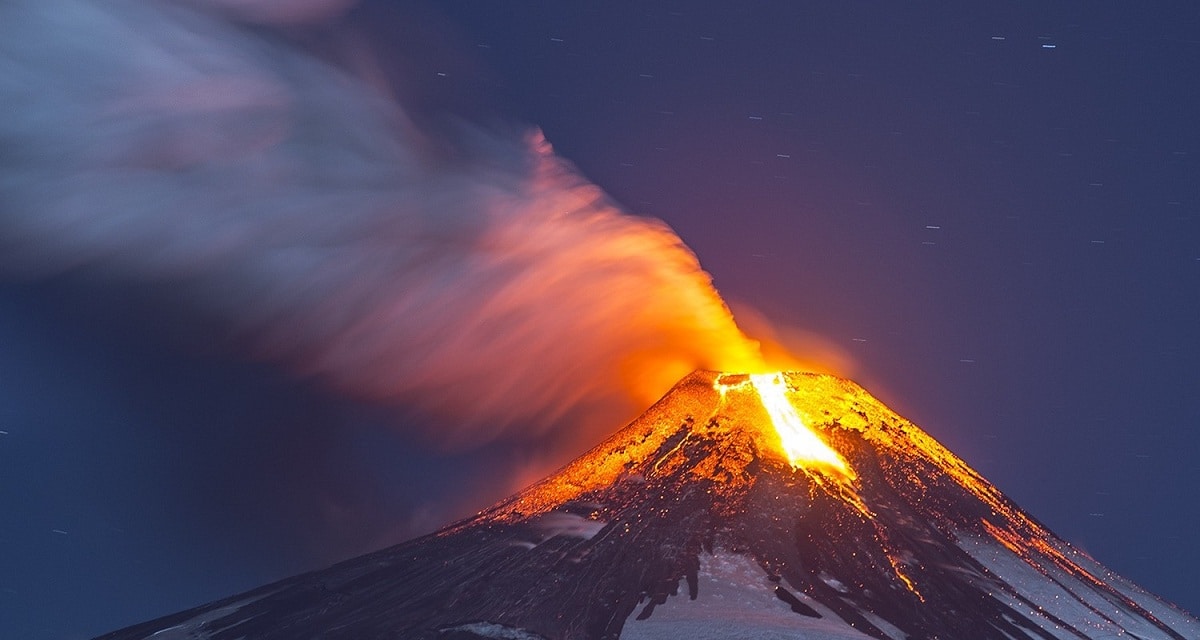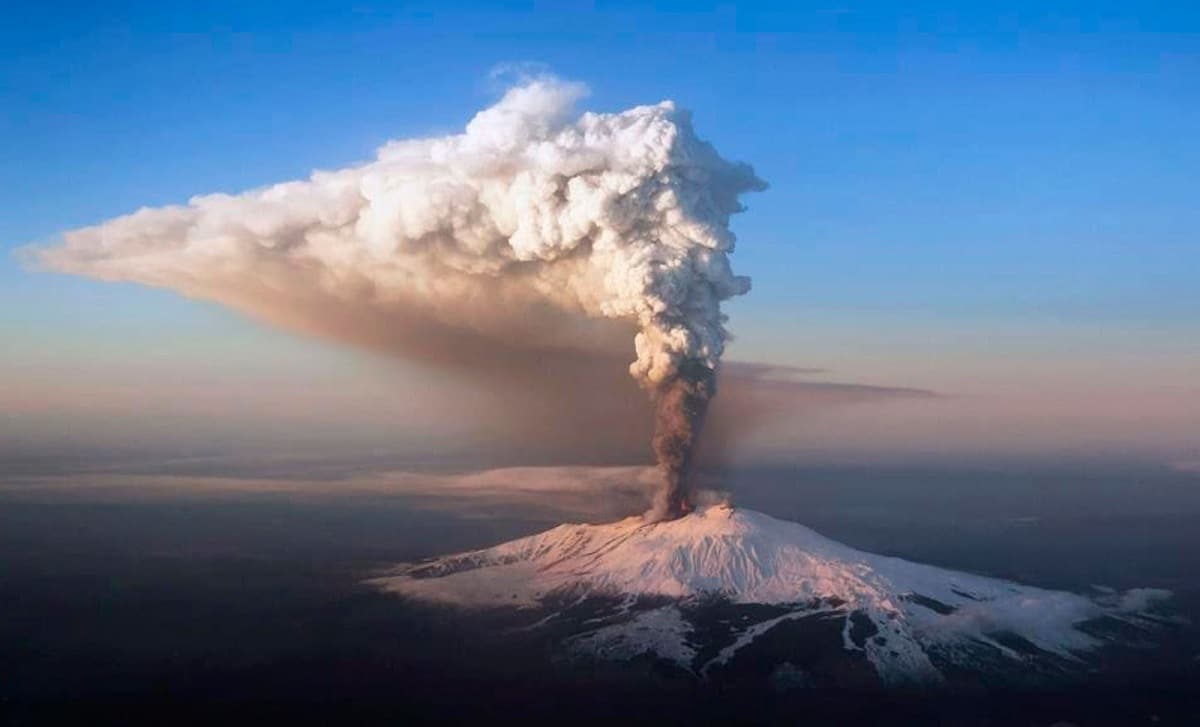
There are numerous types of volcanoes depending on their origin, morphology and different types of eruptions. Eruptions depend on the size and shape of the volcano as well as the proportion that exists between the types of gases, liquids and solids that are released from the interior. Each type of eruption has different consequences both for the transformation of the surrounding ecosystem and for humans.
In this article we are going to explain to you what are the different types of eruptions, their main characteristics and their possible consequences.
What its a volcanic eruption

When we speak of volcanic eruption, we refer to all material that comes out from the top of a volcano. A volcano consists of the magmatic chamber where lava and all hot materials accumulate. These materials come from the earth's mantle and, in turn, from the core of the earth. Depending on the morphology of the magmatic chamber, certain materials accumulate that will subsequently release one or other gases. This chamber is located deep within the earth's crust.
Where the volcanic eruption happens is through the stay. The crater of a volcano is the opening of the highest part and is usually funnel-shaped. The materials and lava that are stored in the magma chamber are conducted into the crater through a conduit called a chimney.
Thus we can say that the volcanic eruption is the expulsion of all these materials that have accumulated in the magmatic chamber over time. There are different types of eruptions depending on the morphology of the volcano and the accumulated materials and gases. The activity of volcanoes is difficult to predict. There are numerous factors that are the determining factors of a volcanic eruption. Normally all volcanoes have periods of inactivity activity.
Some remain permanently with a very moderate activity reducing the negative impacts both on the surrounding ecosystems and on human risks. Those volcanoes that are dormant for centuries and erupt in more intense volcanic eruptions are the ones that can bring the most dangers to the population that has sat in villages around the volcano.
We are going to see what the types of eruptions are based on the gases, liquids and solids that they give off, as well as the shape and size of the volcano.
Types of eruptions
Hawaiian eruptions

These eruptions have as main characteristic fluid magma with basic composition. This is because mainly lava is made up of taller ones. These volcanoes are typical of oceanic islands such as the Hawaiian archipelago. Hawaiian eruptions have very fluid larvae and barely emit gases into the atmosphere. This makes them neither very dangerous nor explosive eruptions.
For a Hawaiian-type eruption to be seen, the volcano must have a shield shape and a low slope. The rate of ascent of the magma from the magma chamber is somewhat rapid, and runoffs arise intermittently.
The danger of these volcanoes lies in the fact that the lavas, being so liquid, are capable of traveling distances of up to even kilometers. Along the way it is traveling, they are capable of generating fires and destroying the infrastructure through which it passes.
Strombolian eruptions
These eruptions have magma of the same composition as the previous one. In other words, its nature is basaltic and it has a very fluid frost. Unlike the previous eruption, the magma rises more slowly and mixes with other gas bubbles that are capable of rising to 10 meters in height. Unlike the Hawaiian eruptions, these eruptions feature sporadic explosions.
Although they do not generate convective columns, the pyroclasts shoot out describing ballistic trajectories and end up being distributed throughout the environment around a few kilometers around the crater. These explosions are not violent, so they are hardly dangerous. They are capable of generating lava cones.
Vulcan eruptions
We move on to one of the types of eruptions that is already having medium explosiveness. The origin of this explosion occurs when the volcanic conduits that are obstructed by frost are uncovered. The explosions occur at intervals of a few minutes to hours. They are common in volcanoes that emit magma that have an intermediate composition between acid and basic.
The columns do not exceed 10 kilometers in height and the eruptions are considered to be somewhat low dangerous.
Plinian eruptions

It is one of the most gas-rich types of eruptions. These gases dissolve with the magma and cause its fragmentation into various pyroclasts. Pyroclasts are made up of pumice and ash. To all this mix of products is added the high speed of ascent through the chimney and the subsequent explosion. The eruptions are usually very stable in both volume and speed. Magmas are usually of high viscosity and of siliceous composition.
Their risk is quite high since the eruptive columns are mushroom-shaped and cause them to reach heights that reach the stratosphere. It is here where significant ash rains occur, affecting a radius of several thousand square kilometers.
Surtseyan eruptions
They are the most explosive in which the magma interacts with large amounts of seawater. The explosions are direct and due to the contact that the lava has with seawater, large clouds of water vapor are produced with a white color mixed with black clouds that come from the basaltic pyroclasts.
Hydrovolcanic eruptions

They are those types of eruptions in which there is an intervention of the water. Lava is usually mixed with the water of the phreatic layer and induces the rise of magma through the chimney of the volcano. The explosions are low A and are produced in the rock above the magmatic heat source. They usually produce deflagration and other sludge runs.
As you can see, depending on the type of volcano, the size and the shape, there are different types of volcanic eruptions. I hope that with this information you can learn more about it.